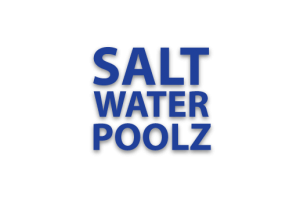Adding Salt to Above Ground Pools
When using a salt chlorine generator to disinfect swimming pool water, adding salt to above ground pools is an important factor to keep it safe, clean and uncontaminated. Above ground pool sanitation is critical to ensure healthy conditions in the pool water.
Pool water tends to get contaminated with time and forms algae on the surfaces. Also, if proper measures are not taken this causes unsafe swimming conditions. The pool water will get contaminated with bacteria, germs, microorganisms and more.
When the salt dissolves, the electrolysis process in the salt cell will produce pure chlorine gas for the above ground pool water. And is keeps a continuous flow of chlorine in the water during operation hours based on the amount your pool needs.
Salt chlorine generators are becoming popular because pool owners no longer have to transport or store chlorine. Salt water pools also do not irritate your eyes and skin like chlorine pools.
Salt Instructions
After installing generators by professionals, many pools owners are not instructed correctly on the core upkeep for the pool water and the salt generator system. For example, a lot of homeowners need to know how much salt to add? How to add the salt to the pool? What type of salt is best?
First, check your chlorine generator manual to find out the operating level of your generator. Some of the salt chlorine generators have their operating salt level on the system’s power supply. Usually, generators operate between the ranges of 3000-4000 ppm. So, for proper operating conditions, you need to bring the salt level to the range required for your system.
Second, you need to determine the current salt level of the water. A new pool will have 0 to low salt levels. If you have already added salt to your pool at one time, you will need to test your pool water for the current salt level. Salt is a total dissolved solid, so it will not leave your water. But rain or adding new water will reduce your salt levels.
If you want to find an accurate salt level of your pool, you may check it by using salt water test strips. Remember to make sure the expiration date is not expired. If it is, you will get incorrect salt levels. You can take a water sample and get your salt concentration level checked at your local pool store. Or use a digital salt level reader.
Once you know your current salt level, now you need to know how much salt your pool needs. Using https://poolchemicalcalculator.com is an easy way to find out the calculations for your desired salt level. On the Salt PPM Calculator, you enter your gallons, current salt levels, and desired salt levels for your pool and this awesome calculator will calculate the required salt amount for you.
If you do not know how many gallons your pool holds, https://poolchemicalcalculator.com/ has a Pool Volume Calculator. You can select your pool shape and enter your dimensions. Then it will give how many gallons your pool holds.
When it comes to the salt for your salt chlorine generator, the best salt to use is basic sodium chloride. You do not want salt that has additives and minerals; it can cause salt level errors with your system. Additives and minerals affect the salt readings by making them high readings for your system.
Adding salt to above ground pools is easy. There is no complicated process when adding the salt. You simply pour the salt in the pool water. It is best to pour it around the whole pool and not in one spot. Do not brush the salt after pouring it into the water; it could cause damage to your pool liner. It takes about 24 to 48 hours for the salt to dissolve. After that test the water to make sure you have enough salt for proper operation.





Leave a Reply
Want to join the discussion?Feel free to contribute!